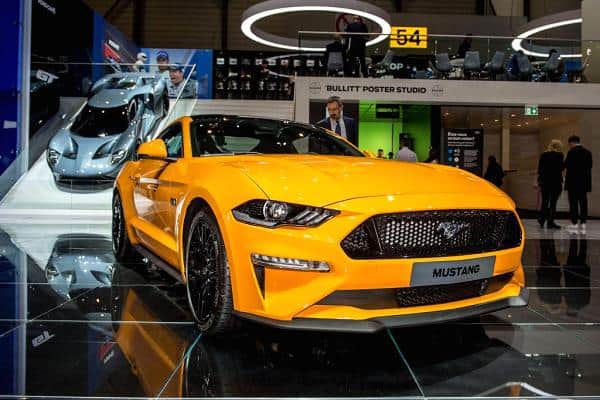
With its eye on accelerating cost cuts, Ford announced first-quarter earnings that topped analyst expectations and offered up some detail on the steps it will take to improve its financial health and realign its portfolio with a dramatic shift in consumer tastes.
Like many of its peers, Ford has faced declining demand for its passenger cars, and on Wednesday said it will not invest in next-generation models of its traditional sedans for North America.
Within the next few years, the only two cars Ford will make will be the Mustang and a new Focus Active crossover, scheduled to debut next year. The other 90 percent of its North American portfolio will be made up of trucks and SUVs by 2020.
Ford is now aiming to hit a pretax profit margin target of 8 percent by 2020, two years earlier than it previously planned, by slashing $25.5 billion in costs and $5 billion in capital spending.
“We are going to be fit across our entire business,” said CEO Jim Hackett on a conference call Wednesday evening. He added that the company will release further details in the coming months and at an investor meeting on Sept. 26.
Here’s how the company did compared with what Wall Street expected:
- Earnings: 43 cents per share vs. 41 cents per share forecast by Thomson Reuters
- Revenue: $41.96 billion vs. $37.16 billion forecast by Thomson Reuters
First-quarter net income was $1.74 billion, or 43 cents per share. That is slightly higher than the first quarter of last year, when Ford earned $1.59 billion, or 40 cents a share. It also topped analyst estimates of 41 cents per share, according to Thomson Reuters.
Ford reported $41.96 billion in revenue, up 7 percent from $39.15 billion a year ago and higher than the $37.16 billion analysts were expecting.
The company, which is the No. 2 U.S. automaker behind General Motors, was hurt by rising commodity costs and unfavorable foreign exchange rates in the latest quarter. But sales of high-margin pickup trucks and SUVs helped boost its performance.
In North America, Ford’s market share declined by just over 0.5 percent and profit margins declined just over a percentage point to 7.8 percent, which Ford blamed on the higher commodity costs.
In South America, Ford posted an EBIT loss of $149 million, marking the sixth consecutive quarter of losses in the region. Despite the loss, key metrics improved in the region, due to economic recoveries in Brazil and Argentina.
European revenues were up 18 percent, fueled by exchange rates and higher pricing, but margins were down 1.5 percentage points to 1.3 percent for the region.
The Middle East and Africa region saw an EBIT loss of $54 million, but metrics did improve for the fourth consecutive quarter.
The Asia Pacific region incurred an EBIT loss of $119 million, which Ford blamed on its business in China. But losses were partially offset by profits elsewhere in the region. India improved but still posted a slight loss.
Ford said it strengthened its relationship with Mahindra Group, and the two will collaborate on new SUVs and electric vehicles for India and other emerging markets.
Ford’s Mobility business, which is tasked with investing in autonomous driving and other mobility technologies and business opportunities, posted higher losses than the same quarter last year.
Ford Credit saw earnings before taxes rise 33 percent over the same quarter last year, to $641 million, but the company now expects full-year EBT to be flat or lower than last year.
The earnings beat was positive overall, and it was helpful to hear details on how Ford plans to improve its finances, said Jeff Windau, an analyst for Edward Jones. But there still are a lot of questions.
“It is positive they are taking the steps to communicate the details of the direction they are taking,” he said. “But it is going to be challenging. They are going to be making cost reductions as they are developing these new platforms and new technologies. They are trying to move some pretty big rocks all at the same time.”

